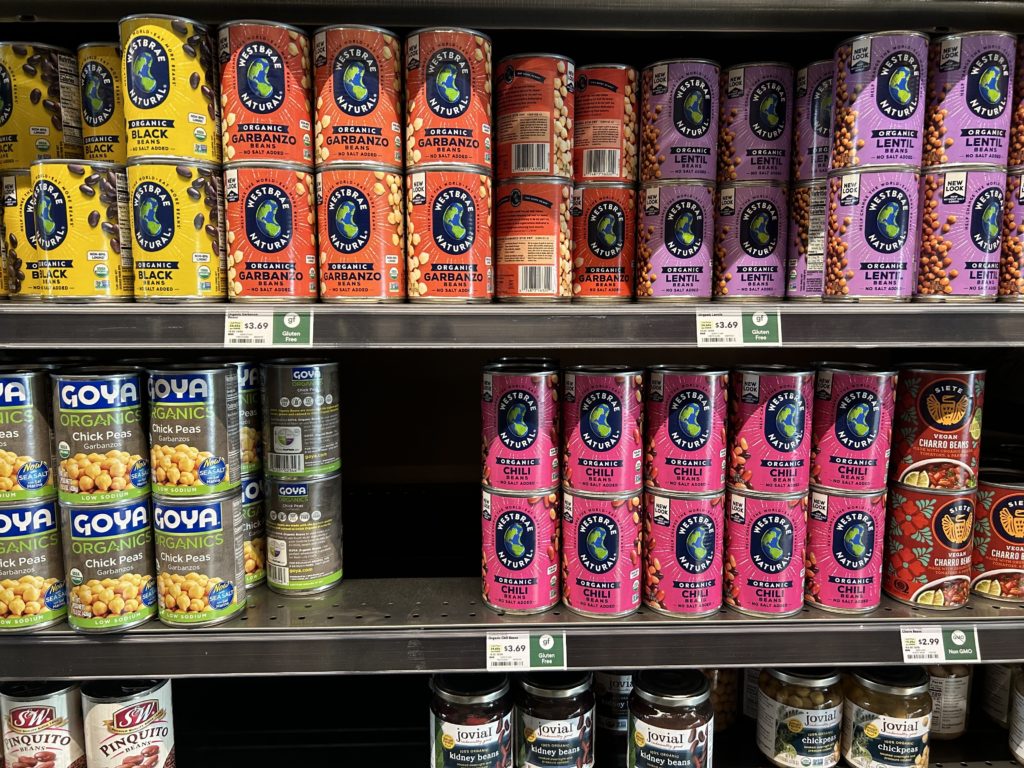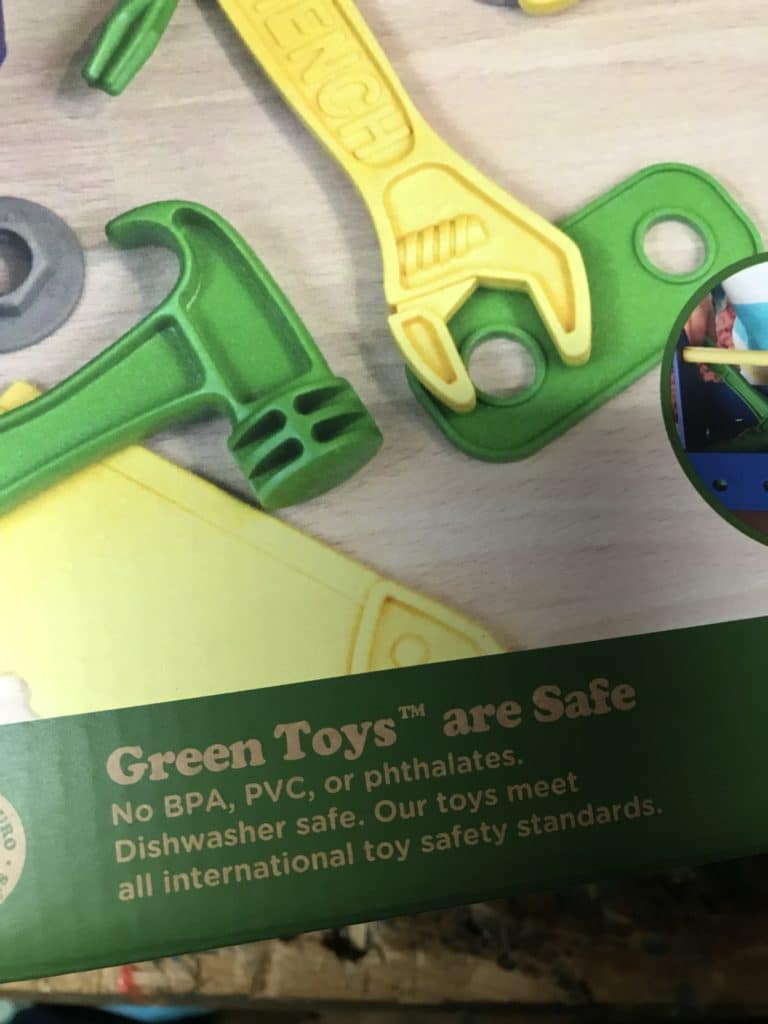Bisphenol a (BPA) is a chemical that stiffens plastic and helps prevent corrosion of metal (such as in canned goods). While extremely useful in manufacturing, printing, and packaging, BPA is harmful to health. It’s also a lot harder to go BPA-free than you might think, especially in the U.S.
Table of Contents
Where is BPA commonly found?
BPA is present in a wide variety of products. These include:
- Sports equipment
- Medical and dental devices
- CDs and DVDs
- Household electronics
- The lining of water pipes
- Water bottles and other food containers
- Eyeglasses
- Canned goods
- Home canning lids
- Some thermal paper receipts
- Household textiles with plastic linings (such as waterproofing pads and sheets)
- Toys, strollers, booster seats, high chairs, and other kids’ items.
Because the chemical is so useful to manufacturers, it’s often a safe assumption that a product contains at least some BPA unless it carries a BPA-free certification.
See also: The best BPA free canned goods

BPA in food packaging
European countries and China limit contact between BPA and food. This is not the case in the U.S., where there is a lack of legislation mandating that food packaging be BPA-free.
While most of the focus around BPA is on water bottles and canned foods, it’s notable that many beverage cans are also lined with BPA. Soft drinks, especially fruit and energy drinks that are acidic, and even beer cans can pose a risk of BPA exposure.
Many companies have, thankfully, heeded consumer concerns and removed BPA from cans and other products sold in the U.S. The Food and Drug Administration (FDA) maintains that BPA is safe at low levels, but numerous studies suggest that BPA can contribute to a variety of health issues.
Notoriously, BPA is also used to coat the insides of food containers to prevent corrosion. Unfortunately, this chemical can leach into foods and liquids, with leaching increasingly likely with heat and acidity. Plastic water bottles that contained BPA were shown to leach approximately 1 to 4 parts per billion (ppb) of BPA and other organic compounds when exposed to water and 121˚C for 2 hours in an autoclave.
BPA in receipts
Many paper receipts are a source of BPA exposure. The chemical is used to develop color in inkless thermal printing. Unfortunately, while BPA in food cans is bound to resins that line the cans, which helps stop at least some leaching, the BPA in thermal paper is unbound. This means you’re actually more likely to be exposed to BPA from receipts than from canned foods.
Unsurprisingly, people who handle thermal receipts regularly, such as cashiers, are at greater risk of BPA (and BPS) exposure. This is yet another example of environmental health injustice in action, where frontline, low-paid workers often bear the brunt of failure to regulate harmful chemicals.
Europe has banned the use of BPA in thermal paper, but this has largely been replaced with BPS, which is just as bad (see below).
Free eBook: Simple Steps to a Greener Home
Concerned about climate change? Learn actionable tips for making each room in your home greener.
"*" indicates required fields

How to tell if a receipt contains BPA
The easiest way to tell if a receipt contains BPA is to scratch the surface. If a black mark appears, this is a thermal receipt that is very likely produced with BPA or an equally harmful alternative.
To minimize BPA exposure from receipts:
- Say no to paper receipts where possible (this also saves resources!)
- Ask for an email receipt instead
- Have a separate envelope for paper receipts.
Keeping receipts stuffed in with your cards and cash can mean you’re exposed to BPA several times a day. Using an envelope to stash thermal, BPA-laced receipts separate from your cash, cards, and so forth can help reduce overall exposure. That way, you still have those receipts for accounting purposes or in case you have to return an item, but you can minimize BPA contact overall.
Why worry about BPA?
BPA is quite well absorbed by the body, with studies finding the chemical in samples of blood and urine. It’s clear that BPA passes through the placenta, with samples of amniotic fluid, umbilical cord blood, and placental tissue all found to contain BPA.
BPA is an endocrine disruptor. This means it has hormone-like effects in the body, including affecting estrogen and thyroid hormones. According to the Mayo Clinic, BPA exposure has been linked to a variety of health concerns.
Even aside from its effects on humans, BPA is bad news for aquatic organisms and other wildlife. This is because the chemical gets into waterways through waste effluent from manufacturing facilities and as BPA leaches from landfill waste. Buying and using BPA-free products helps to reduce the overall amount of BPA in the environment, which helps you, your family, your community, and other animals.
Why you should also avoid BPA alternatives
There’s been a big increase in products sporting a honking great ‘BPA-Free!’ label on the front in recent years. Great! Sort of.
While this kind of label might make you think a product is perfectly safe, the reality is that many companies simply replace BPA with similar chemicals that haven’t yet been assessed for safety. Instead of taking the precaution of outright banning these BPA alternatives, the FDA allows the chemicals to be used, pending significant reports of harm.
This is, unfortunately, a glaring example of the FDA falling foul of the fallacy that the absence of evidence of harm is evidence of the absence of harm. Put another way, just because we don’t know if a new synthetic chemical is harmful doesn’t mean it isn’t.
It’s also worth noting that we actually do have evidence of harm from BPA alternatives.
For example, the most common BPA replacement is BPS (bisphenol S), which also accumulates in human tissues and appears to be just as active as BPA when it comes to hormonal upset. Other BPA alternatives include Bisphenol F (BPF) and Bisphenol A Diglycidyl Ether (BADGE).
There’s mounting evidence that BPF could affect reproductive health. Specifically, BPF appears to:
- Lower testosterone levels and sperm production
- Reduce levels of luteinizing hormone and follicle stimulating hormone.
As far back as 2015, researchers demonstrated that BPS and BPF were actually just as active as BPA when it comes to hormone disruption, yet federal regulators in the U.S. continue to ignore the evidence.
In 2018, researchers published a study showing that 95.7% of the Americans tested had detectable levels of BPA in their urine. The same study also found BPS and BPF in, 89.4% and 66.5% of the samples. Gender, race, ethnicity, family income, and other socioeconomic factors were all associated with the level of BPA, BPS, and BPF. Notably, men tend to show higher levels of BPA than women, perhaps due to differences in BPA elimination and exposure.
Differences in BPA levels related to race and income suggest that environmental health injustice plays a role in chemical exposure. Previous studies have found, for instance, that people living close to e-waste disposal facilities in China have far higher levels of BPA and alternatives than the general population.
Worryingly, while Europe banned BPA in thermal receipts in 2020, the European Chemicals Agency (ECHA) estimated that, by 2022, 61% of thermal paper in Europe was BPS-based. So far, Switzerland is the only currently to ban both BPA and BPS in thermal receipts. In Canada, Costco has phased out the use of both BPA and BPS in thermal receipts, and has a policy of eliminating phenols entirely from receipts, though it doesn’t disclose what it uses in their place.
Is there BPA in recycled plastics?
Given the rise in products made with recycled materials, you may be curious if there is BPA in recycled plastics. This question has certainly troubled me, especially as I wouldn’t want to inadvertently increase BPA exposure by buying seemingly eco-friendlier products.
The answer to this question is, as you might expect, rather complicated. The short answer is that most plastic is recycled using mechanical processes that shred polycarbonate into fine granules that are then reused to make new plastic. If the polycarbonate did contain BPA (or BPS or alternatives), the chemical(s) would also be present in the resulting recycled plastic.
There are other ways to recycle plastic though, including chemical recycling or depolymerization. In this case, the BPA and other chemicals are separated out, meaning that phthalates and BPA would not be present in any new polycarbonate resin made from the recycled materials.
It’s also possible to use recycled plastic from sources that were BPA-free to begin with. The trouble, of course, is that most companies have no idea how the recycled plastic they use to make their eco-friendlier products is actually recycled.
Green Toys is one of my favorite children’s toy brands. This U.S. company set out to be eco-friendly from the start and exclusively makes toys using recycled plastic (usually from milk jugs). The toys are all tested to confirm that they contain no BPA, phthalates, or PVC. We currently own the Green Toys Tool Set, Tea Set, Submarine, and Ferry Boat with cars and we love them!

Avoiding BPA and alternatives
As we’ve seen, if you’re trying to avoid the harmful effects of bisphenols on your health and the health of those around you, it’s not enough to choose BPA-free alone.
The best way to avoid BPA and its alternatives in food packaging is to choose:
- Fresh fruits and vegetables (and grow your own if you can!)
- Bulk foods – fill your own paper or cotton bag or jar
- Food and beverages packaged in glass, stainless steel, or (some) tetrapaks
- No receipt, please!
It’s also a good idea to avoid using plastic food containers for storage at home. If you do use these, avoid putting them in the dishwasher and microwave and let food cool before you transfer it to the container. Where possible, use glass, stainless steel, ceramic, or porcelain to store food and beverages, instead of plastic or plastic-lined containers.
As an added precaution, I also recommend avoiding products made with recycled plastics for sensitive items like baby bottles, sippy cups, bath toys, and anything that comes into contact with food, liquids, or the body on a regular basis. Instead, natural materials, like wood, melamine-free bamboo, glass, ceramic, porcelain, and even food-grade silicone are the better options here.
Even after doing all that, chances are you will still be exposed to some BPA, BPS, BPF, and BADGE. The best way to help your body eliminate BPA and its analogs is to:
- Eat a healthy diet
- Drink plenty of water
- Get regular exercise.
Ideally, you’ll work up a sweat on a regular basis as BPA is excreted through sweat. Some naturopaths also suggest that anyone with specific concerns about high exposure to BPA and its ilk take steps to support more effective liver function and a healthy microbiome.